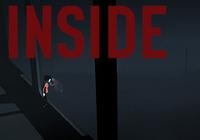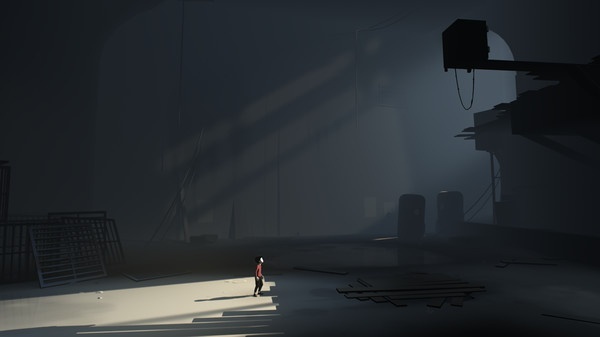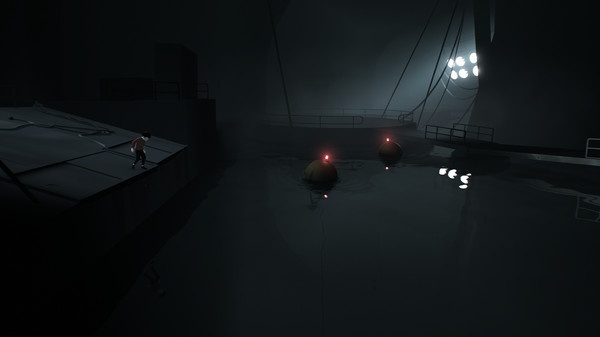INSIDE (PC) Review
By Jordan Hurst  11.07.2016
11.07.2016

In 2010, Playdead released its debut title, LIMBO, which became an instant indie classic despite some contention regarding its length (for the record, quality always trumps quantity, and that's all that will be said about that here). INSIDE, their sophomore effort, thus had quite a legacy to live up to, so when it was revealed, looking almost exactly like LIMBO with a different paintjob, a lot of people understandably wondered what Playdead had been doing for the last six years. The answer, it turns out, was crafting the most stunningly realised experience they possibly could.
As with seemingly everything this developer outputs, comparison between the two games requires some layered thinking. Their similarities are certainly more than superficial - they're both bleak, highly interpretable 2D puzzle-platformers driven by minimal controls and drenched in atmospheric sound - but there are still significant differences deeper down. For one thing, there are a fair number of new gameplay features at work. Players are still limited to moving, jumping, and interacting with objects, but just like before, it's everything around that core that matters. In addition to standard puzzles involving physics and multifaceted machinery, INSIDE's four hours include using submarines as battering rams, fending off hostile creatures with weak light sources, and directing human husks using mind control helmets. Then, in the last 30 minutes, it erupts into a gonzo finale - the mechanics of which could have carried an entire game - that's simultaneously horrifying and bizarrely funny.

INSIDE also shifts closer to cinematic platformers like the early Prince of Persia and Oddworld games than LIMBO did; its controls are a little delayed to account for more expressive animation, and it relies heavily on scripted background events. The influence of exploration games ("walking simulators") is also noticeable. That likely just turned some potential customers off, so it must be noted that this is pretty much everything an exploration game should be. It doesn't just strip out traditional gameplay for the sake of stripping out traditional gameplay. It does it to draw the player's attention elsewhere when needed. Thus, while there are several segments that require no more input than continuously walking right, it's possible you won't even notice, because the game provides important material for your other senses to absorb.
Presentation is a huge component of the experience. At the surface level, there's the moderately minimalist art style that's a consistent pleasure to look at and the fascinating sound design that blends artificial effects with realistic noises so completely that it's hard to tell which is which. On a deeper and ultimately more important layer, however, is the sublime use of composition. Playdead has tapped into an element of game design normally off-limits to this genre and used it to masterful effect: camera control. The 2.5D perspective will always feel slightly artificial by definition, but the organic camera scripting and physics on display here bring this setting to life as much as possible. Combine this with gorgeous lighting and expertly constructed environments, and one has to wonder how Playdead chose the game's promotional images, since every screenshot could have functioned as one.

For all its artistic merits, however, INSIDE feels less thematically cohesive than its predecessor. The narrative progresses wordlessly, starting with a young boy emerging in a shadowy forest and evading capture, and then following him as he descends into a massive complex of initially unknown (and still somewhat unknown by the end) purpose. While LIMBO didn't have a straightforward plot like this, the events and symbols it contained still told a multileveled story, all of which could be linked back to a single concept: death. The closest thing to a similar through-line here is probably the concept of groupthink. While the game gets some excellent mileage out of this theme - Area 51-style "military experiment" imagery is used to evoke a conspiracy theory mentality, and there's one segment in particular that silently screams "Conformity is bad!" - it fails to cover all of its bases.

There are several plot moments that go totally unexplained, and not in ways that can be excused by symbolism. In retrospect, LIMBO got away with a lot because of its abstract nature - unreal creatures could exist without us wondering why they exist, for example. INSIDE doesn't have that advantage. Its setting is as metaphorical as Freud's wildest fantasies, but a good metaphor needs a functioning literal component, which isn't present here, making things like the defiantly closure-free ending rather frustrating. There is a bonus ending that can be viewed after discovering all of the achievement-granting secret areas, which could offer some earth-shattering insight into the nature of the plot…or it could just be a joke at the expense of the game's mechanics. Either way, seeking it out is recommended, if only to get the whole picture before constructing your own interpretations.
The one narrative element that was wholly improved between this title and its predecessor is the main character. In LIMBO, the protagonist could be adequately described as "the silhouette that got killed a lot." The most interesting thing about him was his ultimate fate. This new character acts identically, but because he's visually distinct from the rest of his world, he feels different nonetheless. Similar to the protagonist of ICO, his red shirt is often the only splash of colour on screen, and his childlike, almost goofy animation (his pant legs even flare out whenever he jumps!) gives him a spark of humanity that stands out against an otherwise intentionally lifeless setting.

Cubed3 Rating
Great - Silver Award

Calling INSIDE merely a "worthy successor" would be doing it a disservice. It's not just great relative to its sibling; it's great, period. Its cinematic, artistic, and structural techniques have set a new standard for 2D platformers to be measured against. It's possible that in the future, someone will piece together its occasionally disparate story elements into a more meaningful whole, which would likely make it one of the best games of all time. For now, it is "only" one of the best games of the year, an arresting journey, and a solid puzzler.

![]() 8/10
8/10
![]() 0
(0 Votes)
0
(0 Votes)
 Out now
Out now  Out now
Out now  None
None  Out now
Out now Comments
Comments are currently disabled

 Sign In
Sign In Game Details
Game Details Subscribe to this topic
Subscribe to this topic Features
Features





 Top
Top

